How art was saved from the 1966 Florence flood: the exhibition that tells the story
On the occasion of the anniversary of the tragic flood that hit Florence on November 4, 1966, devastating the artistic and architectural heritage of the city but also the surrounding area, the exhibition Florence 1966 2016 opened. Beauty Saved, curated by Cristina Acidini and Elena Capretti and open until March 26, 2017.
The exhibition, which includes one hundred and fifty pieces, including paintings, sculptures, books, documents, applied art objects, musical and scientific instruments, aims to put the spotlight on what was the response of the Florentines and the whole world to the tragedy. Thus, the main protagonists of the entire exhibition are precisely the technical achievements and scientific innovations obtained in the field of restoration and that allowed, and still allow, to save the works, artifacts and monuments from the destructive force of water, mud and oil.
In an exhibition that turns out to be very well curated in every part, not even the choice of its venue is left to chance: Palazzo Medici Riccardi, which at the time of the flood was home to the Museo Mediceo, one of the places in Florence among the most affected by the catastrophe. And just on the subject of the affected places, particularly interesting is the reproduction of the beautiful map of Florence, the original of which is kept at the Military Geographical Institute of Florence. It, displayed in the first room, clearly indicates the various levels reached by the water after the flooding of the Arno. Also noteworthy as particularly positive is the decision to devote entire exhibition rooms to those places, somewhat less famous than the National Library or the Santa Croce complex, but which equally suffered extensive damage, such as the Synagogue and the Archaeological Museum, the Bardini Museum and the Horne Foundation Museum. The exhibition part dedicated to the Jewish Temple is enriched, moreover, by the presence of a ’video installation that shows, step by step, the various stages of the restoration work on the beautiful ceremonial robes that were preserved in the Temple.
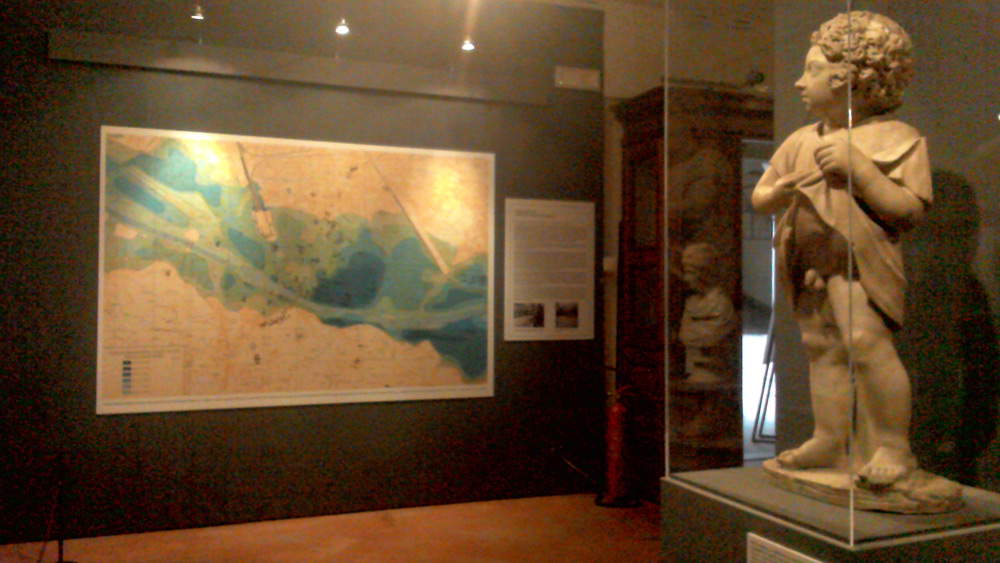 |
| The room with the floor plan of Florence |
For the same principle, which intends to give space to less illustrious artifacts, it was decided to exhibit also those nuclei of collections that have recently become part of the Cultural Heritage, and that usually, when talking about the flood, are not even considered. We are talking about scientific and musical instruments, which, as the video accompanying the exhibition explains, are among the most difficult pieces to restore, because it is essential to restore their proper functioning. In the large room where they are displayed, the cases of flooded documents sent for restoration abroad or not yet restored have also been arranged. This is to show how the challenging restoration of the countless damaged items is, fifty years later, still ongoing.
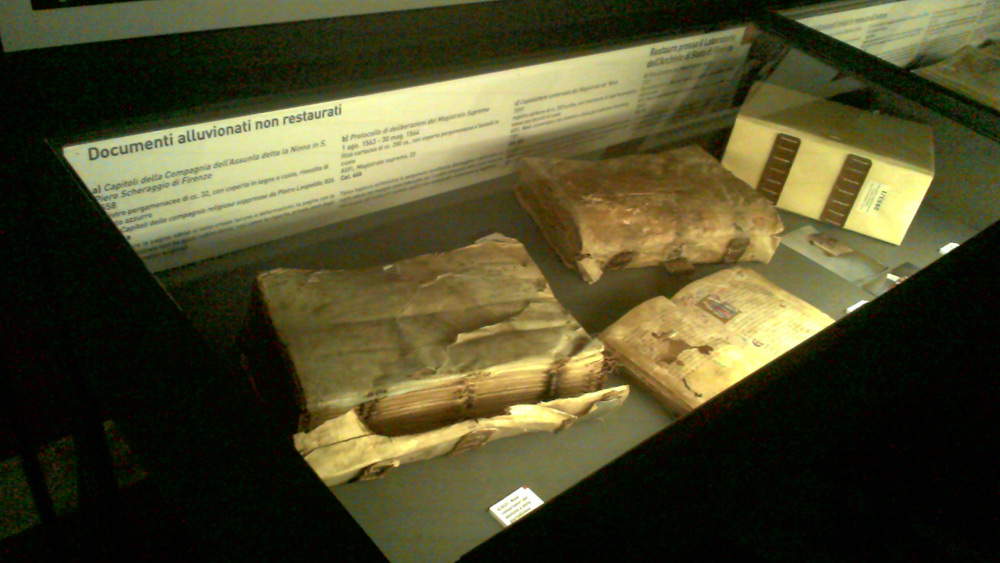 |
| Documents flooded but not restored |
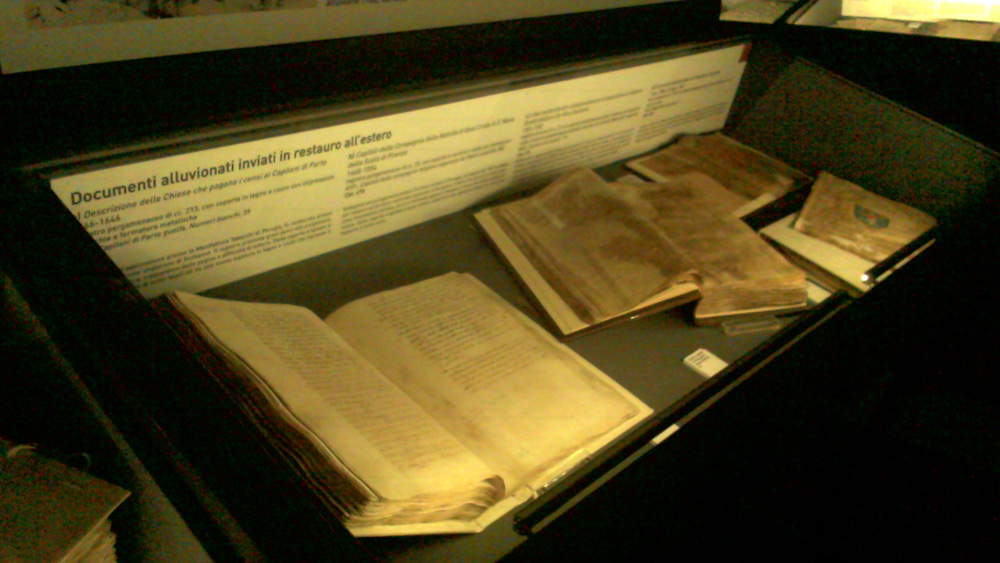 |
| Documents flooded and sent abroad for restoration |
In this regard, the exhibition concludes by showing others unknown to the general public, that is, the last ones, so called by the curators themselves, namely those works that are still waiting to be restored and even in danger of being forgotten, if the recovery process, which has now reached very high technical levels, is not about to be concluded for them as well. The intent of showing them here seems to be, therefore, to encourage adequate funding and interventions.
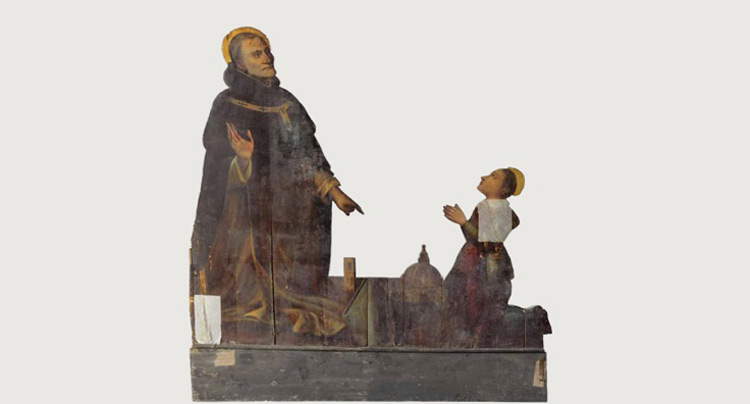 |
| One of the “last” ones: seventeenth-century shaped panel with St. Antoninus acting as a conduit to God of the prayers addressed by the young St. Philip Neri for the cathedral of Santa Maria del Fiore |
To conclude, of considerable interest are the historical photographs reproduced on the explanatory panels and which well document the damage and the recovery and rescue efforts, with images of the museums, their storerooms, archives, libraries, places of worship submerged in the mud, and volunteers setting to work. The entire didactic layout turns out to be well conceived in order to make the overall intent of the exhibition clearer and provide useful tools for understanding what is on display. Particularly interesting are the panels that illustrate and explain the stages of the restoration work on Giovanni Battista Naldini’s altarpiece, Saint Francis of Assisi Receives the Stigmata, and Carlo Portelli’s altarpiece, Dispute on the Immaculate Conception, both of which are kept at the Museo dell’Opera di Santa Croce, but are displayed here precisely to show the results of these recent restorations (2006-2016).
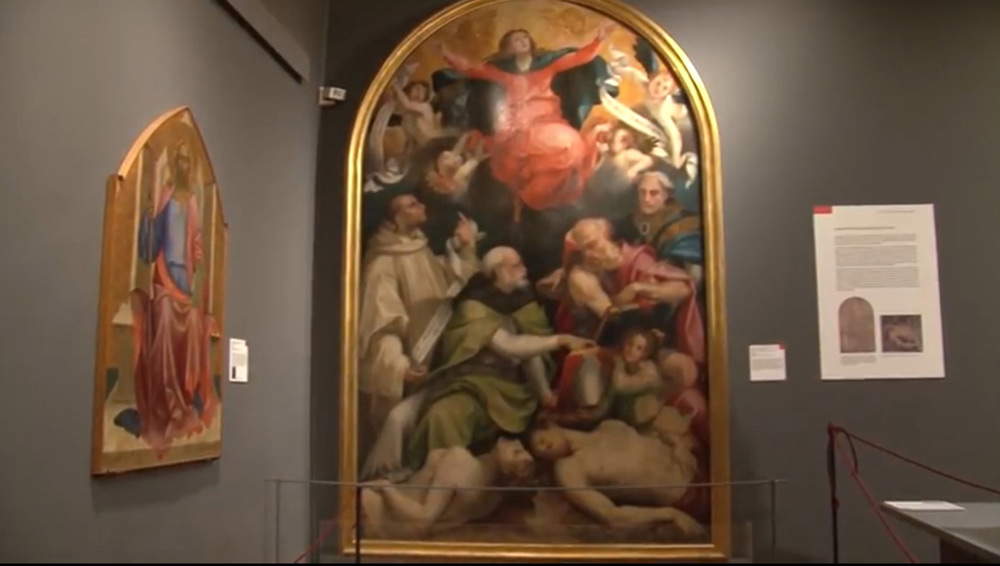 |
| The room with the Dispute on the Immaculate Conception by Carlo Portelli (photo from the exhibition website) |
It is a pity that the whole thing was done in the Italian language only. The lack of an international opening in this sense, does not do credit to the quality of the entire initiative. Moreover, it is even more jarring if we think of how much resonance, on an international level precisely, the flood had at the time, with volunteers who, from all over the world, arrived in Florence to make their contribution in saving a large slice of the Heritage of Humanity that was in danger of being destroyed.
Warning: the translation into English of the original Italian article was created using automatic tools. We undertake to review all articles, but we do not guarantee the total absence of inaccuracies in the translation due to the program. You can find the original by clicking on the ITA button. If you find any mistake,please contact us.



























